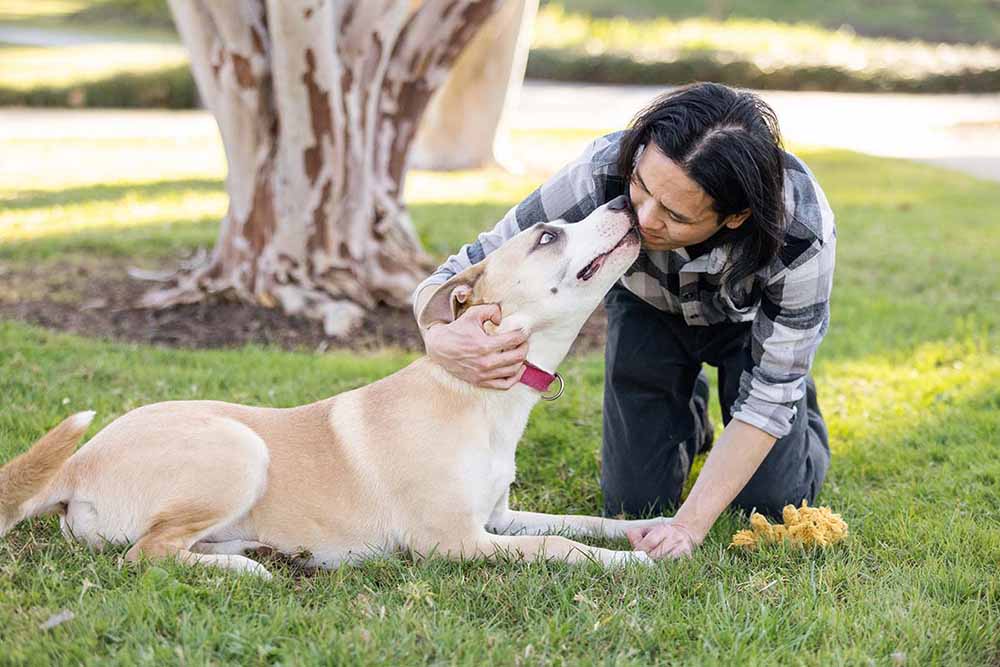“Once you have had a wonderful dog, a life without one, is a life diminished.” – Dean Koontz
A great dog is your most loyal companion. They’ll trust you and do anything for you, carving a forever place in your heart. When you’re lucky enough to share your life with a dog, you enjoy a strong human-animal bond. Yet, if you have a new puppy or a rescue, you might wonder what’s the best way to bond with your dog.
Julie Burgess is a Certified Dog Trainer (CPDT-KA) with SeniorTailWaggers.com. She recommends patience and a routine with daily training sessions to build trust and strengthen your bond.
7 Proven Habits to Bond with Your Dog
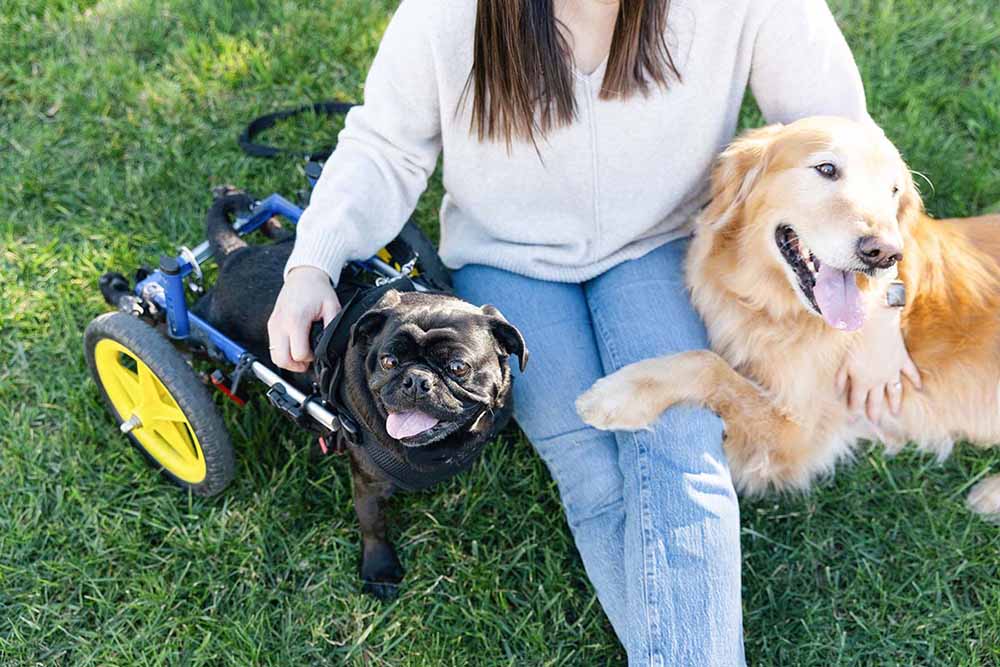
Dogs are eager to please you. It’s part of their nature. They look to you for guidance, and when you’re kind, patient, and offer positive reinforcement in the form of tasty treats, your dog will naturally bond with you.
Of course, every dog can try your patience when you’re first getting used to one another. For example, your new puppy might gnaw the heel off your favorite pair of shoes. Or, your rescue might come from a difficult situation that requires all your empathy and patience.
Here’s how you can be the best dog parent for your pooch.
1. Be Patient
Burgess says, “Be patient. Dogs can come from many situations.”
Some of those situations may be abusive or otherwise challenging. If you adopt a pup from a threatening situation, they’ll naturally need more time to build trust. Burgess recommends showing plenty of patience and giving such dogs space and alone time as needed. She says, “Let them approach you when ready.”
2. Be Kind
Dog trainer and author Nicole Wilde shares a technique that worked for her after she adopted an anxiety-driven pup named Bohdi. Exhausted and stressed from her new adoptee’s destructive tendencies, she decided to go on a “cuddle offensive.” In other words, she chose to act like they’d already bonded even though the past few weeks showed otherwise.
She gathered all her patience and kindness and sat beside Bodi, giving him long, soothing strokes and speaking quietly. Wilde praised him and accepted him. She reports it worked. Within a few days, Bohdi was calmer.
3. Establish a Routine
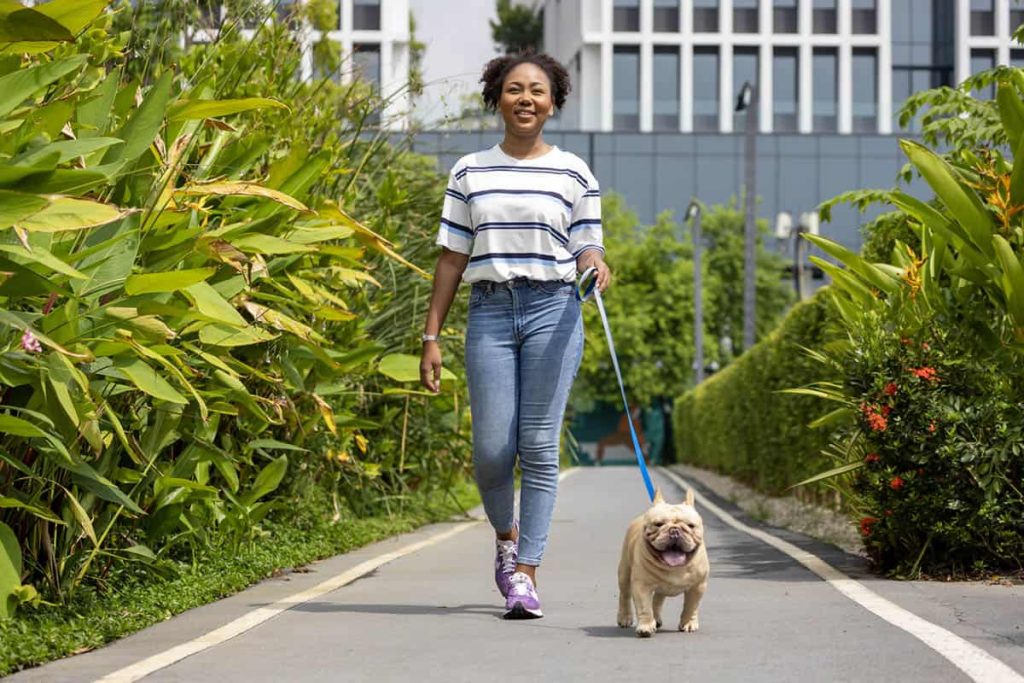
All dogs love a routine. They appreciate knowing what you expect from them. Dogs are kind of like your most organized planner friend. If your dog could read, they’d appreciate a written itinerary. But since they can’t read, they are pretty good at telling time. When you feed and walk them at the same times every day, they can gauge the day.
Burgess says, “Dogs dislike change and appreciate structure. When your dog knows what to expect, it’s easier for them to adapt to your household.”
If your routine is irregular, your dog can feel uncertain about how to behave, which can create anxiety and lead to destructive behavior or “accidents” in the house.
If you’re adopting a new dog, it’s helpful to take a few days off if you can. This way, you’ll be available to help your new furry friend settle and establish your routine. When you feed and walk your pup at the same time each day, you’ll build your bond because your dog will feel more comfortable and trusting.
4. Spend Quality Time Together
The best way to build a strong bond with your dog is to spend time together. Go for walks. Cuddle on the couch. Teach your dog a new trick.
Burgess says it’s never too late to build a stronger bond with your dog. “You may feel you don’t have a good bond with your dog, but it’s never too late. Start spending more time with your dog and discovering what they like to do. It might be tug of war, fetch, or even agility.”
Hanging out together builds trust and shared experiences. You learn what your furry friend likes and vice versa because every dog has their own personality. Some doggos are social and adore a dog park. Others would rather hang out one-on-one with you.
There’s no substitute for spending time together to build the human-animal bond.
5. Recognize Your Dog’s Body Language
Pups communicate volumes through their body language. From the way they hold their ears to the angle of their tails, your dog is always telling you something. You can build trust by recognizing your dog’s stress and play signals.
For example, when your dog’s body language demonstrates front elbows on the ground, head lowered, and bum in the air with a tail wag, your dog is ready for playtime. This is an invitation for you and an opportunity to have fun together!
6. Hold Fun Training Sessions Daily
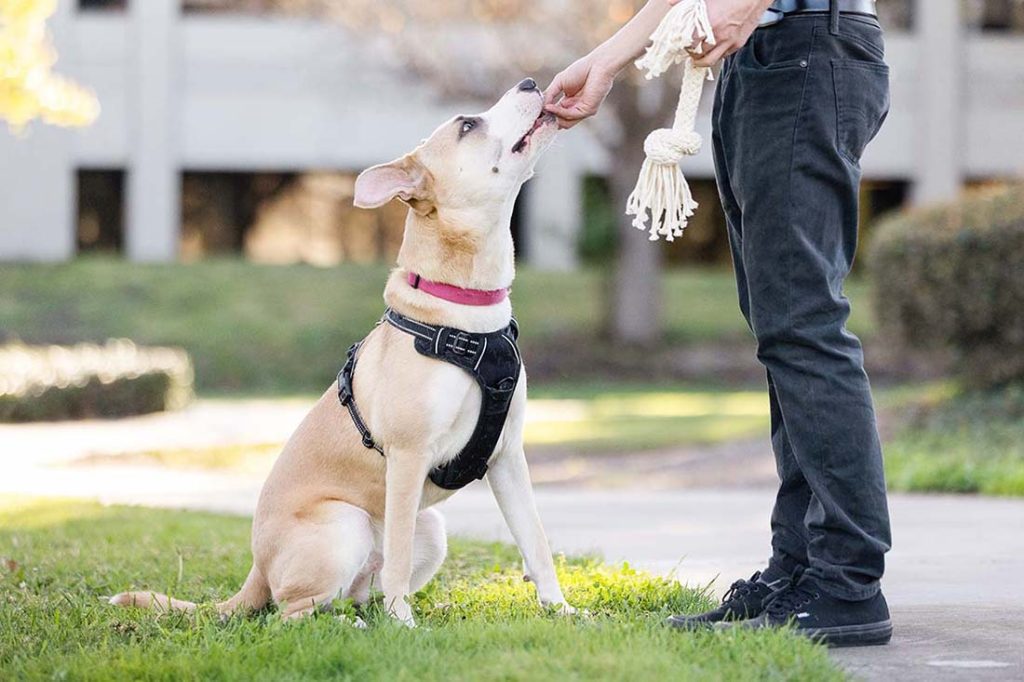
A well-trained dog makes a great companion and is good for everyone’s well-being because you both feel confident in one another. Burgess says it’s important to hold daily dog training sessions with your dog. “Work with them every day, even if you can only squeeze in 10 minutes. Show them what you want them to do and reward them for good behavior with gentle praise and yummy treats.”
Dog training is for all ages. If you have a new puppy, you can teach basic commands like sit, stay, and come. You might set a goal for your dog to receive the Canine Good Citizen training to build new skills and doggie confidence.
You can teach your older dog new tricks if you have a well-trained pooch. Many dogs love learning. For example, one summer, my niece taught my ten-year-old Eski to jump through a hula hoop. He loved it!
If you’re not sure how to start dog training or your dog has behavior issues like separation anxiety, try YouTube videos made by a dog trainer or hire a dog trainer near you. They speak dog and can help you improve your communication.
7. Positive Reinforcement
Yummy treats and praise are an excellent way to train your dog and build your bond. As your bond grows stronger, you can rely more on verbal praise and petting or tummy rubs than treats.
Many dogs respond well to high-value treats like chicken or cheese. When you use such treats in your training sessions, you may be surprised by your pup’s attention and good behavior.
How Long Will It Take to Bond With Your Dog?
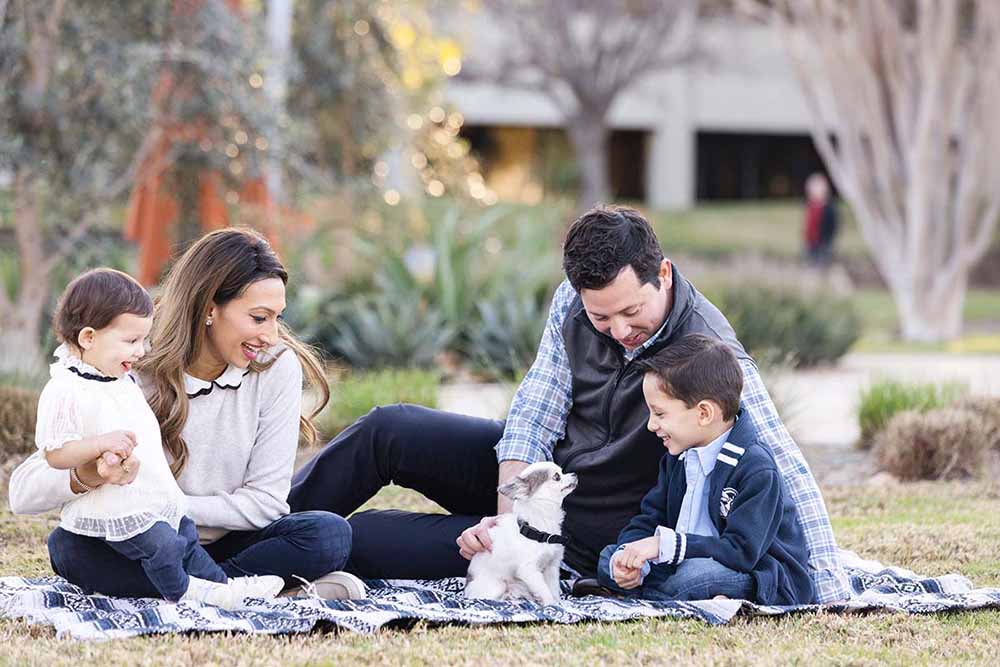
It depends on the dog. Burgess says, “Avoid forcing or trying to hurry to bond with your dog. Human nature is to hurry, and that’s the opposite of dogs. All dogs have their personality, even from the same litter. Dogs are excellent trainers and do well teaching us what they want us to know.”
So if your dog bounds into the room every day at 7:30 with his ball, then he’s asking for playtime. If you take this opportunity to play with your dog, your pup will feel happy.
Overall, every dog is different, and it’s important to understand your pooch’s circumstances. A healthy, new puppy has a different perspective than an adult dog you rescued from a challenging environment. The latter dog may require more time to build trust. If you’re patient and give them the space you need, you will build that trust.
Strengthening your bond with your dog is always worth it, and it will take time. Every dog is different, but spending time together will help.
A Common Misunderstanding
Sometimes, people attribute spiteful attitudes to dogs. Burgess reminds us that dogs “don’t do anything out of spite. They don’t have this cognitive ability.”
If your dog makes a mistake such as peeing inside, ask yourself when they’d last gone outside. Dogs can potty inside because they haven’t had enough potty breaks. If you have an anxious dog, they may pee inside because they’re afraid.
If you’re giving your dog enough potty breaks and still having problems, a dog trainer can help you get to the root of the problem.
Enjoy Your Time
The most important thing about the human-animal bond is the more time you spend together, the better you’ll understand one another. When you know what your dog likes, you can give it to them, whether that’s a fast-paced game of hide and seek or cuddle time on the couch.
Both playtime and physical contact build a stronger bond between you and your best friend. Most of all, have fun! Bonding with your dog is a special experience.
